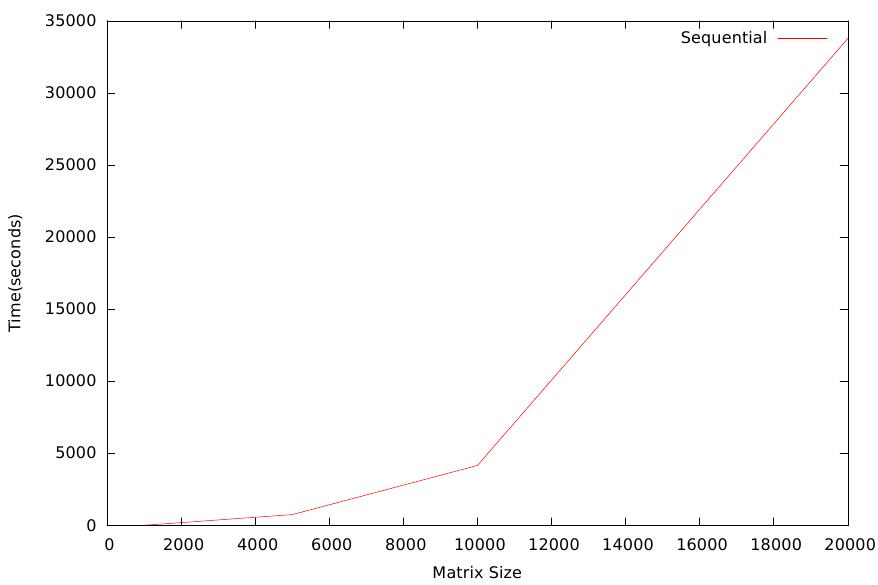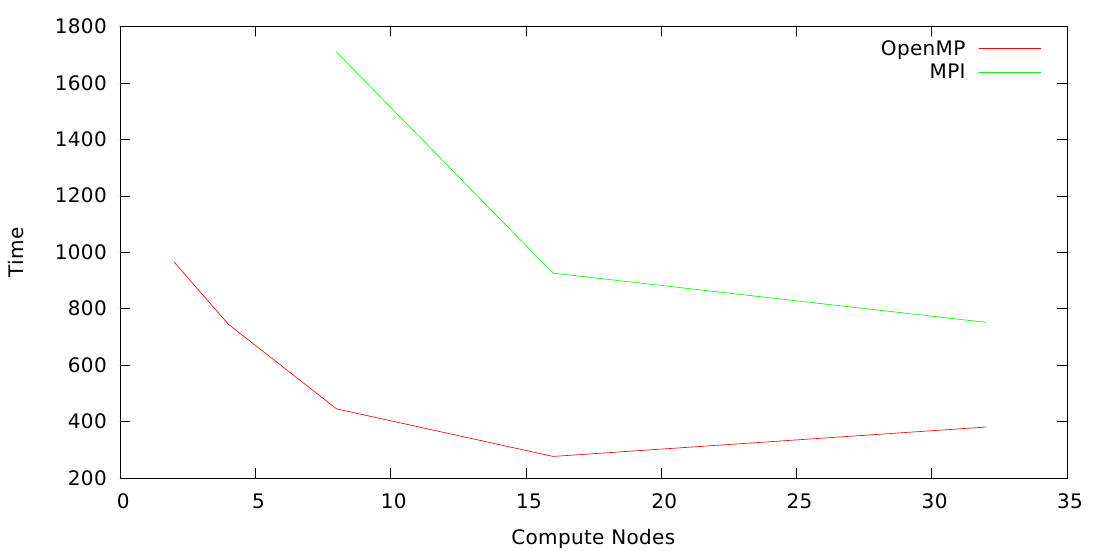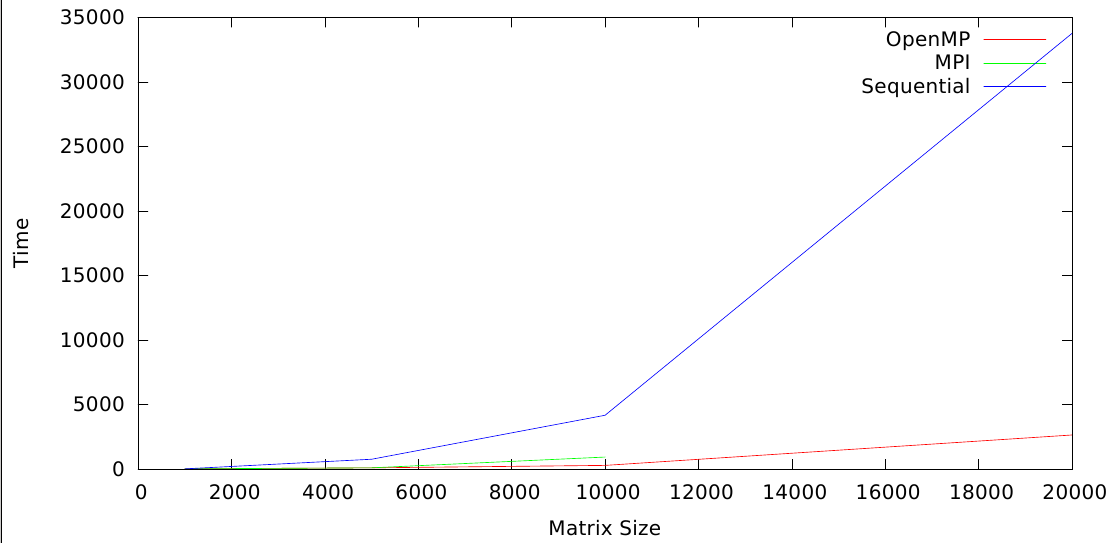-
Root directory contains three sub-directories namely ’Sequential’, ’OpenMP’ and ’MPI’.
-
Each subdirectory has source code in the form of ** ’*.c’** file.
-
Matrix is generated in a manner that it decomposes into a L and U containing only 1s and 0s.
-
To submit jobs for various configurations run ’./submit.sh’ on terminal. This will automatically submit all the jobs in the subdirectory to the general-compute queue of the ccr cluster.
-
Outputs are generated in the output.txt file. Sample outputs are included.
-
In the corresponding subdirectory run ./plot.sh on the linux terminal to generate a graphical visualization of the output. gnuplot is required to generate graph.
-
Graphs are generated as ’Plot.pdf’. Please wait for the job run to finish and outputs to accumulate.
-
Gaussian elimination algorithm was implemented that sequentially decomposes the square matrix.
-
Algorithm was evaluated on input matrix size of 1000, 5000, 10000, 20000.
-
Time taken to decompose the matrix grew exponentially with the increase in size.
-
Since, this was a sequential implementation increase in compute nodes won’t do anything.
-
Since I was using Gaussian elimination that computes L and U matrices separately, I ran out of memory when matrix size of 50,000 was tried. This implementation makes two copies of the matrix of same size as input.
-
Gaussian elimination algorithm was implemented that uses the block wise decomposition in parallel.
-
The for loops are parallelized in a manner that blocks of matrices are decomposed by dividing the work among parallel threads.
-
Algorithm was evaluated for input matrix of sizes 1000, 5000, 10000, 20000 with a combination of 2, 4, 8, 16, 32 threads executing in parallel.
-
On a fixed workload the decompostion was faster when more threads are executing in parallel. The execution was comparatively faster on larger workload due to the fact, parallelism was more effective.
-
For a fixed number of cores the time increased exponentially with increase in matrix size.
-
The parallelism was ineffective on relatively smaller loads.
-
Since I was using Gaussian elimination that computes L and U matrices separately, I ran out of memory when matrix size of 50,000 was tried. This implementation makes two copies of the matrix of same size as input.
-
Cyclic distribution was used to accomplish LU factorization of the input square matrix.
-
Each node is responsible for computing its own block and broadcast the result to rest of the nodes.
-
Algorithm was evaluated for input matrix of sizes 1000, 5000, 10000 with a combination of 8, 16, 32 compute nodes working in parallel.
-
For a fixed number of compute nodes the algorithm showed uniform behavior.
-
For fixed workload the parallelism was more effective for larger workloads on maximum compute nodes.
-
Since, MPI involves communication overhead between different nodes, it was slower as compared to OpenMP.
-
As expected sequential algorithm turns out to be the worst performer of the three.
LU factorization algorithm has a great extent of parallelization when scaled appropriately.




